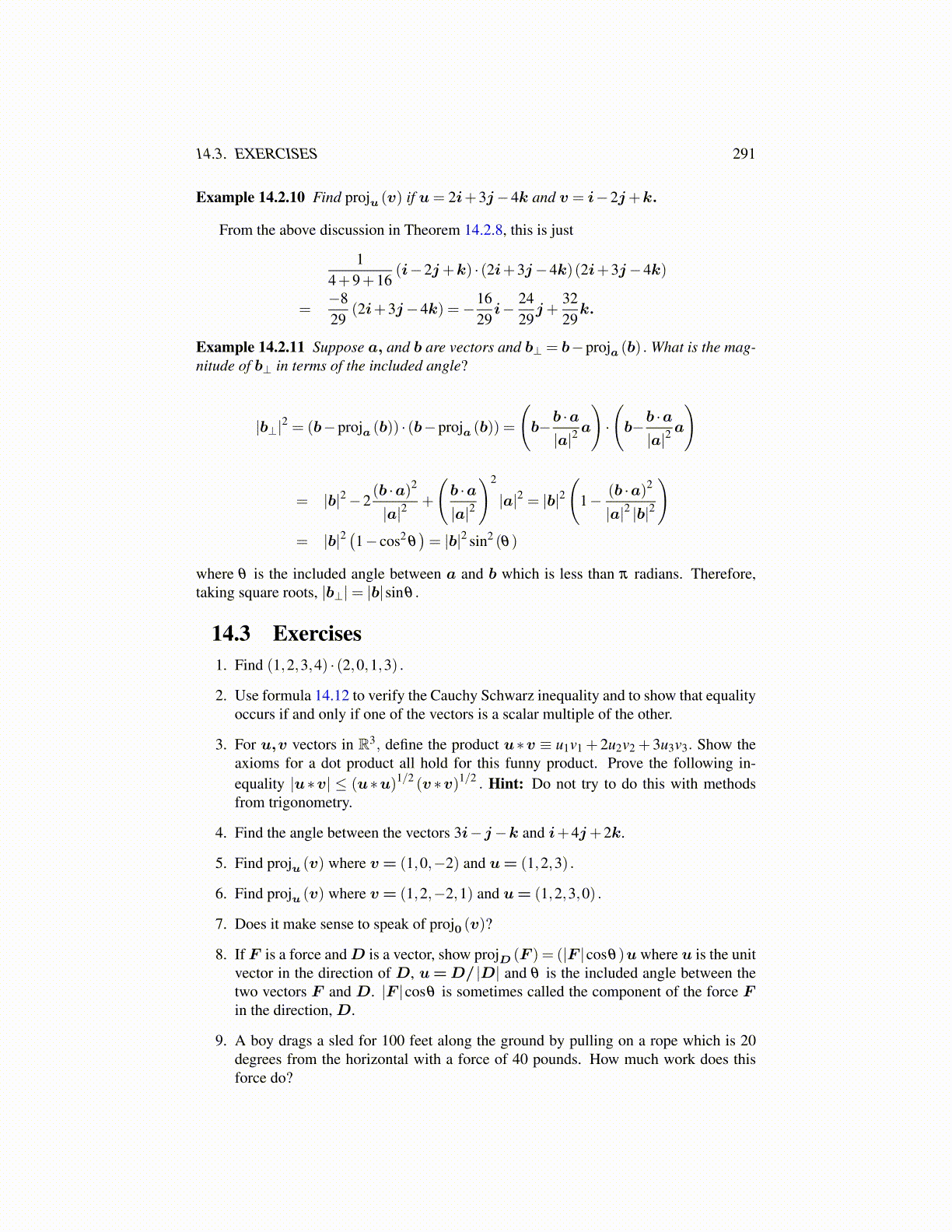
14.3. EXERCISES 291
Example 14.2.10 Find proju (v) if u= 2i+3j−4k and v = i−2j+k.
From the above discussion in Theorem 14.2.8, this is just
14+9+16
(i−2j+k) · (2i+3j−4k)(2i+3j−4k)
=−829
(2i+3j−4k) =−1629
i− 2429
j+3229
k.
Example 14.2.11 Suppose a, and b are vectors and b⊥ = b−proja (b) . What is the mag-nitude of b⊥ in terms of the included angle?
|b⊥|2 = (b−proja (b)) · (b−proja (b)) =
(b−b ·a
|a|2a
)·
(b−b ·a
|a|2a
)
= |b|2 −2(b ·a)2
|a|2+
(b ·a|a|2
)2
|a|2 = |b|2(
1− (b ·a)2
|a|2 |b|2
)= |b|2
(1− cos2
θ)= |b|2 sin2 (θ)
where θ is the included angle between a and b which is less than π radians. Therefore,taking square roots, |b⊥|= |b|sinθ .
14.3 Exercises1. Find (1,2,3,4) · (2,0,1,3) .
2. Use formula 14.12 to verify the Cauchy Schwarz inequality and to show that equalityoccurs if and only if one of the vectors is a scalar multiple of the other.
3. For u,v vectors in R3, define the product u∗v ≡ u1v1 + 2u2v2 + 3u3v3. Show theaxioms for a dot product all hold for this funny product. Prove the following in-equality |u∗v| ≤ (u∗u)1/2 (v ∗v)1/2 . Hint: Do not try to do this with methodsfrom trigonometry.
4. Find the angle between the vectors 3i−j−k and i+4j+2k.
5. Find proju (v) where v = (1,0,−2) and u= (1,2,3) .
6. Find proju (v) where v = (1,2,−2,1) and u= (1,2,3,0) .
7. Does it make sense to speak of proj0 (v)?
8. If F is a force and D is a vector, show projD (F ) = (|F |cosθ)u where u is the unitvector in the direction of D, u=D/ |D| and θ is the included angle between thetwo vectors F and D. |F |cosθ is sometimes called the component of the force Fin the direction, D.
9. A boy drags a sled for 100 feet along the ground by pulling on a rope which is 20degrees from the horizontal with a force of 40 pounds. How much work does thisforce do?